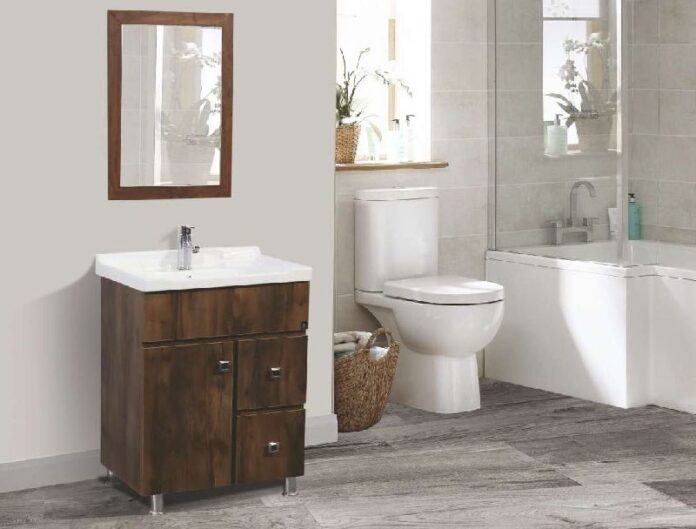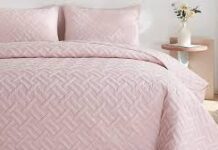Designing a bathroom vanity is a crucial aspect of creating a functional and stylish space. The bathroom vanity serves as a focal point in the room, providing storage, workspace, and aesthetic appeal. To achieve the perfect bathroom vanity, it’s essential to carefully consider the cabinets, countertops, and hardware that will be used. Stores like Willow Bath & Vanity provide a large selection of such equipment. In this article, we will explore the various elements that make up a bathroom vanity and discuss how they all work together to create an inviting and efficient space.
Choosing the Right Cabinets
Types of Bathroom Cabinets
When selecting cabinets for your bathroom vanity, there are different types to consider, each with its advantages and disadvantages. These include:
- Wall-mounted cabinets: These cabinets are attached directly to the wall, offering a sleek and modern look. They provide ample storage space while creating an illusion of more floor space. However, installation can be more complex, and they may not be suitable for all bathroom layouts.
- “Freestanding cabinets: These cabinets rest on the floor and are versatile in terms of placement. They offer a traditional and timeless look and are relatively easy to install. However, they may take up more floor space and limit flexibility in rearranging the bathroom layout. Willow Bath and Vanity Sonoma offers a great option for a freestanding vanity.
- Built-in cabinets: These cabinets are custom-made to fit seamlessly into the available space. They maximize storage efficiency and can be designed to complement the overall bathroom design. However, they require professional installation and are typically more expensive than pre-made options.
Selecting the Right Size and Style
To ensure a well-designed bathroom vanity cabinets, it’s crucial to choose cabinets that are the right size and style for your space and personal preferences. Consider the following tips:
- Measure the available space: Before purchasing cabinets, measure the dimensions of the area where they will be installed. Take into account the plumbing fixtures, doors, and other elements that may affect the cabinet size.
- Evaluate storage needs: Assess your storage requirements to determine the number and size of cabinets needed. Consider factors such as the number of people using the bathroom and the items that need to be stored.
- Reflect on your style preferences: Decide on the overall style you want to achieve in your bathroom. Whether it’s modern, traditional, or transitional, choose cabinets that complement the desired aesthetic.
Importance of Quality Materials
Bathroom cabinets are exposed to moisture and daily use, making it crucial to choose materials that can withstand these conditions. Opting for quality materials ensures the longevity and durability of your cabinets. Consider the following:
- Moisture resistance: Look for materials that are specifically designed to resist moisture, such as marine-grade plywood or solid wood that has been properly sealed.
- Durability: Select materials that can withstand daily use and resist scratches, dents, and stains. Solid wood, plywood, or medium-density fiberboard (MDF) are popular choices.
- Finishes: Choose finishes that are resistant to moisture and easy to clean, such as water-based lacquer or polyurethane coatings.
Selecting the Perfect Countertop
Different Bathroom Countertop Materials
Countertops play a crucial role in the overall aesthetics and functionality of a bathroom vanity. Various materials are available, each with its own characteristics. Consider the following options:
- Granite: Known for its durability and natural beauty, granite countertops can add elegance to any bathroom. They are heat and scratch-resistant but require regular sealing to maintain their appearance.
- Marble: With its timeless elegance, marble is a popular choice for luxurious bathroom vanities. However, it is porous and requires regular sealing to prevent staining and etching from acidic substances.
- Quartz: Engineered quartz offers the beauty of natural stone with enhanced durability and low maintenance. It is non-porous, resistant to stains and scratches, and available in a wide range of colors and patterns.
Tips for Selecting the Right Color and Style
When selecting a countertop for your bathroom vanity, it’s essential to choose a color and style that complements your cabinets and overall bathroom design. Consider the following bathroom design tips:
- Cohesive color palette: Select a countertop color that harmonizes with the cabinet color and the overall color scheme of the bathroom. Create a cohesive look by considering contrasting or complementary tones.
- Visual appeal: Assess the patterns and veining in the countertop material to determine if they align with your desired aesthetic. Some materials offer bold and dramatic patterns, while others have a more subtle appearance.
- Lighting considerations: Take into account the lighting in your bathroom when selecting a countertop. Some materials may reflect or absorb light differently, which can affect the overall ambiance of the space.
Maintenance Requirements
Different countertop materials have varying maintenance requirements. Consider the following factors:
- Sealing: Natural stone countertops like granite and marble typically require periodic sealing to protect against staining. Engineered quartz countertops, on the other hand, do not require sealing due to their non-porous nature.
- Cleaning: Follow manufacturer recommendations for cleaning and maintenance. Use non-abrasive cleaners and avoid harsh chemicals that can damage the countertop surface.
- Avoiding potential damage: Be mindful of potential sources of damage, such as hot styling tools or abrasive materials. Use trivets, cutting boards, and coasters to protect the countertop surface from heat, scratches, and stains.
Choosing the Right Hardware
Importance of Selecting the Right Hardware
Hardware, including knobs, pulls, and hinges, plays a significant role in the overall aesthetics and functionality of a bathroom vanity. Consider the following:
- Aesthetics: Hardware can add personality and style to your bathroom vanity. Choose designs that complement the cabinet style and overall bathroom design.
- Functionality: Consider the ease of use and ergonomics of the hardware. Ensure that it provides a comfortable grip and smooth operation.
- Coordinated finishes: Select hardware finishes that coordinate with other bathroom fixtures, such as faucets and towel bars. Common options include brushed nickel, chrome, bronze, and brass.
Tips for Selecting Complementary Hardware
To achieve a cohesive look in your bathroom vanity, follow these tips when selecting hardware:
- Consistency: Maintain consistency in the style and finish of the hardware throughout the bathroom. This creates a unified and visually appealing design.
- Consider the cabinet color: Choose hardware that complements the cabinet color and finish. For example, sleek, modern hardware may work well with contemporary cabinets, while ornate hardware can enhance traditional cabinet styles.
- Mix and match: If desired, you can mix and match hardware styles or finishes to add visual interest. However, ensure that they still coordinate harmoniously with the overall design.
Importance of Quality Hardware
Bathroom hardware is exposed to moisture and daily use, so selecting high-quality materials is crucial. Consider the following factors:
- Durability: Opt for hardware made from materials that are resistant to corrosion and wear, such as solid brass or stainless steel.
- Easy maintenance: Choose hardware finishes that are easy to clean and maintain, ensuring they retain their appearance over time.
- Smooth operation: Test the hardware before purchasing to ensure smooth operation. Drawer slides should glide effortlessly, and hinges should provide a sturdy and stable movement.
Conclusion
Designing the perfect bathroom vanity involves careful consideration of the cabinets, countertops, and hardware that will be used. Each element contributes to the overall functionality and style of the space. By choosing the right cabinets, considering the different countertop materials, and selecting hardware that complements the design, you can create a custom bathroom vanity that is both functional and visually appealing. Remember to prioritize quality materials that can withstand the demands of daily use and moisture. With the tips and advice provided in this article, you have the tools to design your own perfect bathroom vanity that reflects your personal style and enhances your daily routine.
Write and Win: Participate in Creative writing Contest & International Essay Contest and win fabulous prizes.
















